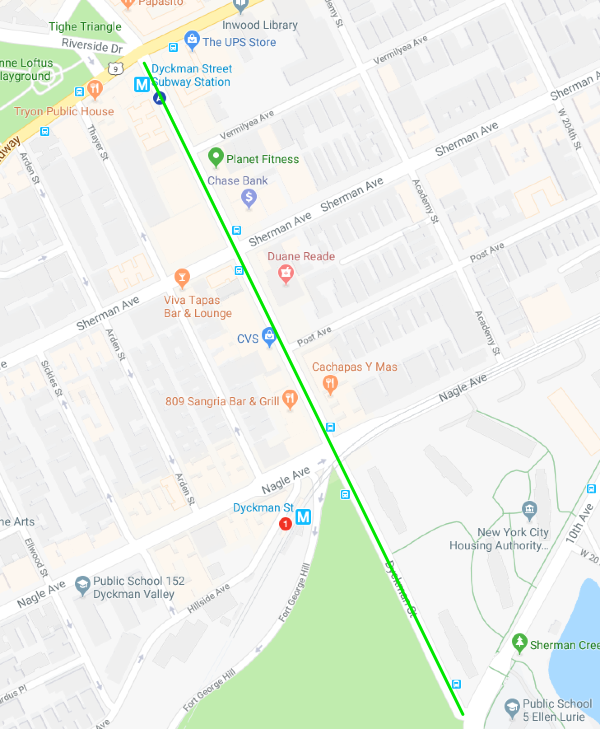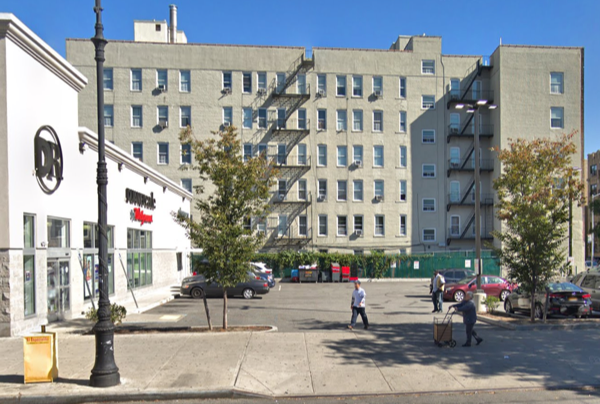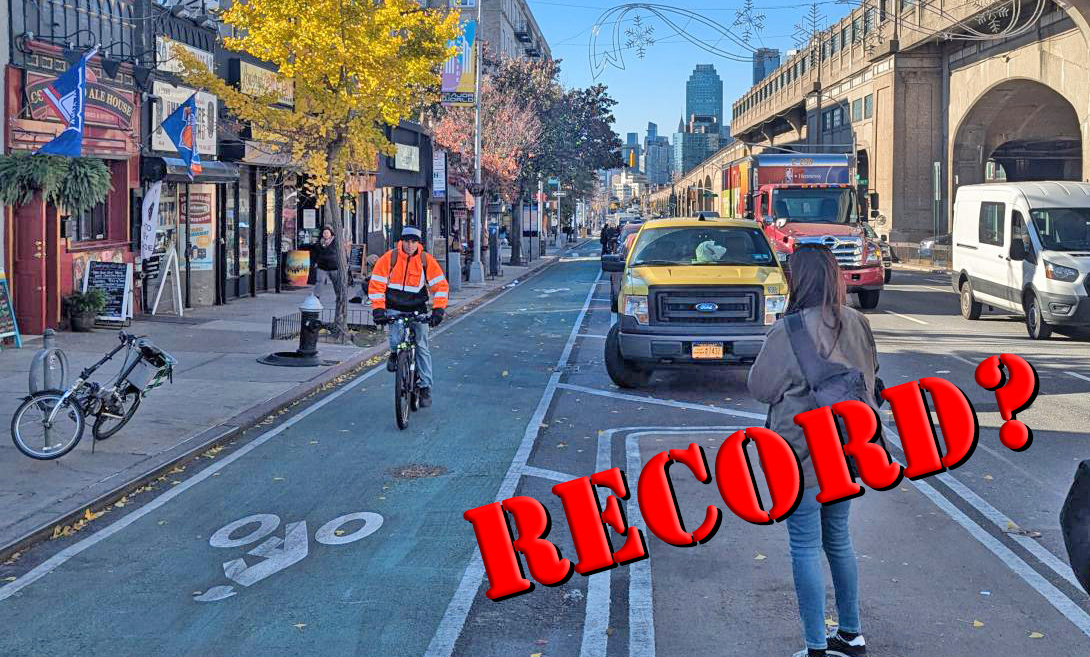With support from Council Member Ydanis Rodriguez, last night Manhattan Community Board 12 passed a resolution that calls on DOT to erase the current Dyckman Street bike lanes -- which the board endorsed last year -- and replace them with a more dangerous design.
Last December, DOT installed parking-protected bike lanes along Dyckman's north and south curbs from Broadway to 10th Avenue. The project separated bike and motor vehicle traffic, shortened pedestrian crossing distances, and forced motorists to slow down while making turns.
The design was the product of a nine-year public process. But soon after its implementation, business owners began complaining because drivers couldn't illegally double-park as easily as they used to. Manhattan Borough President Gale Brewer and Congressman Adriano Espaillat took up the cause, requesting in February -- when the bikeway was just a few weeks old -- that DOT remove it.
Under pressure from merchants and fellow electeds, Rodriguez came out in favor of a two-way bike lane on the north side of the street. That would create more conflicts between drivers and cyclists than the current design and expose people to greater risk of injury.
Drivers turning across a two-way bike lane have to look for cyclists approaching from both directions, which leads to more collisions. For this reason, street engineers try to avoid the design that Rodriguez and CB 12 are calling for.
When DOT does use two-way bike lanes, the agency opts for streets with few intersections where drivers cross the bikeway -- think Prospect Park West or Kent Avenue. Rodriguez and CB 12 are asking the agency to abandon this principle of safe bikeway design. The north side of Dyckman is interrupted by more cross streets than the south side, as well as a suburban-style Duane Reade parking lot. Putting a two-way bike lane on the north side will guarantee more crashes and injuries than the current design.
A more dangerous bike lane configuration would also do nothing to address the actual causes of Dyckman dysfunction: cheap parking meter rates and poor curbside management.
But why let logic and facts get in the way of pandering to a handful of bike-hating complainers:
Good decision by Manhattan CB12 members @MANCB12 and our community support on voting (32 YES & only 4 NO) on the proposal, not to remove, but to have a 2-way #BikeLanes in the northside of Dyckman Street. Our NYC streets belong to everyone!
— Ydanis Rodriguez (@ydanis) May 23, 2018
"Once again, the safety of people on bikes is being downgraded below someone's desire to park a car," said Transportation Alternatives spokesperson Joe Cutrufo. "The protected bike lanes on Dyckman Street are the product of years of community engagement and support. The proposal to replace them with a two-way bike lane is a rush-job response to a few weeks of complaints, and a thinly-veiled ploy to make it easier for drivers to double park."
DOT has so far rebuffed demands to undo the Dyckman project, but agency staffers haven't ruled out wholesale changes in the future. We asked DOT for comment on last night's CB 12 vote, and will update this post if we hear back.
Update: DOT sent a statement: "We will evaluate the CB’s request for a two-way path and determine next steps as we continue to implement short term adjustments to the bike lane."







